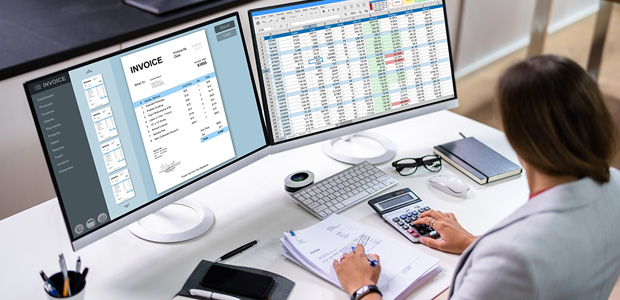CPT Codes for Nursing Facilities: The Complete Guide to Billing and Documentation for Skilled Nursing Services
 Nursing facilities fulfill a critical role in the post-acute care continuum by providing rehabilitation and custodial care services to patients not yet ready to transition home after hospitalization. The range of skilled nursing services offered enables recovery and stabilization for populations such as post-surgical patients, those with newly diagnosed illnesses requiring education and management, individuals recovering from fall-related injuries requiring physical therapy, and patients with chronic conditions necessitating periodic acute flare intervention.
Nursing facilities fulfill a critical role in the post-acute care continuum by providing rehabilitation and custodial care services to patients not yet ready to transition home after hospitalization. The range of skilled nursing services offered enables recovery and stabilization for populations such as post-surgical patients, those with newly diagnosed illnesses requiring education and management, individuals recovering from fall-related injuries requiring physical therapy, and patients with chronic conditions necessitating periodic acute flare intervention.
However, nursing facilities often struggle to optimize reimbursement through accurate and complete billing capture of the wide variety of skilled services delivered day to day. Proper use of Current Procedural Terminology (CPT) codes provides the mechanism to substantiate delivery of nursing care, therapies, treatments, evaluations, medication administration and more based on medical necessity and payer coverage policies. But pinpointing the appropriate CPT codes can prove challenging given the diversity of patient needs and interventions provided.
Insufficient documentation and coding gaps lead to lost revenue for nursing facilities attempting to receive rightful payment for their skilled services at already slim margins. This makes billing and coding an essential competency for nursing facility administrators seeking to place their organizations on solid financial footing to support advancing quality of care.
We dissect the array of CPT codes applicable in skilled nursing settings based on resident needs, modalities performed, and payer billing guidelines.
We will cover CPT codes nursing facilities should recognize for areas including:
- Evaluation and Management Services
- Physical, Occupational and Speech Therapy
- Wound Care and Complex Medical Supplies
- Psychological and Psychiatric Testing
- Radiology and Diagnostic Services
- Medication Administration
Additionally, examples will demonstrate proper application of codes to reflect services delivered based on robust nursing documentation and billing requirements by major payers. Appropriate use of modifiers is also addressed.
This definitive CPT code resource aims to ensure nursing facilities receive optimal reimbursement capturing the full spectrum of resident services and care provided.
CPT Codes for Nursing Facility Evaluation and Management (E&M) Services
Evaluation and management services encompass visits, assessments, care planning and coordination for nursing home residents.
E&M CPT codes capture levels based on complexity:
Nursing Facility E&M Codes
- 99304–99306: Initial skilled nursing facility care codes covering comprehensive intake assessments when patients first enter the nursing facility from acute inpatient, outpatient, or community settings requiring skilled services. Usage determines level.
- 99307–99310: Subsequent skilled nursing facility care codes for follow-up visits and care oversight after the initial comprehensive assessment. Based on visit complexity.
- 99318: Other nursing facility services requiring medically necessary face-to-face visit on patient’s initial SNF admission day, which are otherwise not captured by initial assessment codes.
Proper code level selection depends on documentation and components including:
- Number and complexity of diagnosed conditions requiring management
- Review of patient health history and medical records
- Physical exam extent
- Medical decision making complexity in establishing care plan
- Time spent providing counseling and/or coordination of care
For example, a resident admitted after extensive hospitalization for a fall would likely require 99306 initial SNF care for a highly complex assessment whereas a patient transferred for short-term IV antibiotic treatment may only need basic 99304 initial code.
Ongoing Subsequent Visit E&M CPT Codes
After the comprehensive initial assessment, subsequent skilled nursing facility E&M codes capture necessary follow-up visits and care:
- 99307: Used for low complexity visits that may not require hands-on exam
- 99308: Moderate complexity visits including interval history and brief exam
- 99309: High complexity visits with detailed interval history, comprehensive exam, and possible care plan adjustments
- 99310: Very high complexity visits reserved for unstable patients requiring intensive services
Subsequent visit code selection should accurately reflect work performed. This includes evaluating symptom progression, modifying care plans, updating medication orders, specialty care coordination, and managing multidimensional patient issues.
Proper Nursing Home E&M Billing and Documentation
Correct application of nursing facility E&M codes requires integration between care provided and coding principles:
- Initial vs subsequent visit coding determined by elapsed time between assessments
- Careful review of resident case mix categories, which determine Medicare payment rates and coverage eligibility, to identify billable complexity
- Complete diagnoses list with impact on management documented
- Only face-to-face time between provider, patient, and caregivers counts toward selection
- Medical necessity and skilled need for each encounter clearly justified
- Detailed resident evaluation, updated progress notes, modified orders, new assessments, and care plan changes recorded to support code levels
With accurate documentation synchronizing clinical services and billing codes, nursing facilities ensure appropriate reimbursement for management, evaluation, and care coordination of residents.
CPT Codes for Skilled Nursing Facility Rehabilitation Services
Rehabilitating patients back to optimal functionality requires physical, occupational and speech therapy.
CPT codes specifically capture these modalities:
Physical Therapy CPT Codes
- 97161: Physical therapy evaluation low complexity
- 97162: Physical therapy evaluation moderate complexity
- 97163: Physical therapy evaluation high complexity
- 97164: Physical therapy re-evaluation established patient
- 97165: Occupational therapy evaluation low complexity
- 97166: Occupational therapy evaluation moderate complexity
- 97167: Occupational therapy evaluation high complexity
- 97168: Occupational therapy re-evaluation established patient
Speech Therapy CPT Codes
- 92521: Speech therapy evaluation
- 92522: Speech therapy evaluation with modifiers
- 92523: Speech therapy treatment 15 minutes
- 92524: Speech therapy treatment each additional 15 minutes
The level of evaluation codes depends on elements like:
- Number of body parts involved requiring assessment
- Review of health records and history
- Functional testing performed
- Clinical decision making complexity
- Time spent
Treatment codes are then selected for therapy services based on the hands-on time spent actively engaged in exercises, gait training, manual therapy, modalities like electrical stimulation, and supervision of activities. Billing documentation must capture details supporting code level.
Using PT, OT, Speech Therapy Modifiers
Specific modifiers describe therapy circumstances to convey further context:
- GP: Services delivered under an outpatient physical therapy plan of care
- GO: Services delivered under an outpatient occupational therapy plan of care
- GN: Services delivered under an outpatient speech-language pathology plan of care
Modifiers that may also apply in certain cases:
- 59: Distinct procedural service when multiple therapies provided in one day
- AS: Physician assistance for only part of a therapy service
- AT: Acute treatment with goal to reinstate prior level of function
The modifiers provide supplemental information to illustrate therapy delivery circumstances impacting billing requirements.
CPT Codes for Wound Care Supplies and Procedures
Chronic wounds require extensive nursing facility resources for cleansing, dressing changes, and monitoring to prevent deterioration.
CPT codes capture involved services: Other Considerations: Robust documentation of wound status, procedures performed, supplies utilized, and clinician time validates appropriate wound care CPT code levels selected.Wound Care CPT Codes
Wound Care Supply CPT Codes
Psychological and Psychiatric CPT Codes for Nursing Homes
Mental and behavioral health needs of residents require psychiatry and psychology services in skilled nursing settings: Using these codes accurately requires detailing: By selecting psychiatric and psychological CPT codes aligned with assessments performed, treatment approaches used, time invested, and diagnoses addressed, nursing facilities capture provision of mental and behavioral health services.Psychiatric CPT Codes
Psychological CPT Codes
Radiology and Diagnostic CPT Codes for Nursing Home Residents
Skilled nursing facilities provide many ancillary services like x-rays, labs tests, and other diagnostic procedures: Remember key principles: Linking CPT codes to supporting service documents prevents payer rejection for insufficient evidence. This ensures reimbursement for x-rays, bloodwork, urinalysis and other facility-provided diagnostics.Radiology CPT Codes
Pathology CPT Codes
Medication Administration CPT Codes
The extensive medication regimens required by nursing home residents demand accurate capture of administration services: Key billing insights: With robust notes detailing medication names, dosages, routes and oversight required, nursing facilities receive payment for management of extensive pharmaceutical regimens improving resident health.Injection CPT Codes
IV Medication CPT Codes
Enteral/Parenteral Nutrition CPT Codes
Summary
Applying the optimal CPT codes in skilled nursing facilities requires understanding a broad array of services provided, precise documentation of resident evaluations, quantifying treatment times, listing diagnoses addressed, and payer billing policies. But specific codes do exist to capture rehabilitation therapies, complex medical equipment and supply usage, clinician E&M services, diagnostic testing, medication administration and more.
Becoming familiar with the CPT codes outlined here positions nursing facilities to maximize reimbursement potential through accurate billing capture. Partnering with a specialized post-acute care medical billing service offers an additional resource ensuring coding and documentation synchronize to convey the full scope of high-quality care delivered to improve the health of residents.

